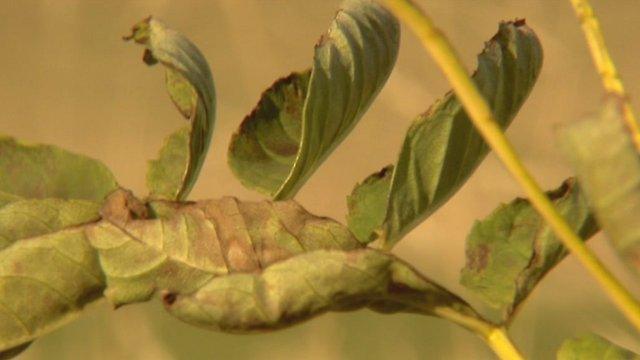Ash dieback disease still spreading 10 years on
- Published

Ash trees at the Holnicote Estate continue to be devastated
Ash trees are starting to display signs of resistance to ash die back 10 years after it was discovered in the UK.
The devastating fungal disease was first found on trees in the Holnicote Estate by the edge of Exmoor, Somerset.
"It's early days to say when things will get better," Matt Stanway, tree and woodland advisor for the National Trust, said.
The National Trust said in 2022 for the second year running it would spend £1m dealing with ash dieback.
The cost comes from removing infected trees or fencing off areas where trees are liable to fall and cause hazards.
When ash dieback was first identified, the trust tried to leave trees standing initially.
The fungus was so damaging because it originated in Asia, and the UK's native ash species had not evolved any resistance to it.
"It has killed around 95% of ash trees in Blackford Wood where it was first discovered," estate manager Rob Manicom said.
"It's so devastating. We didn't ask for this disease to come along.
"Trees are dying right across the estate.
"There is some hope for the future.
"Felling is the last resort - the more we leave that might be resistant to the disease, the more the species will survive," Mr Manicom said.
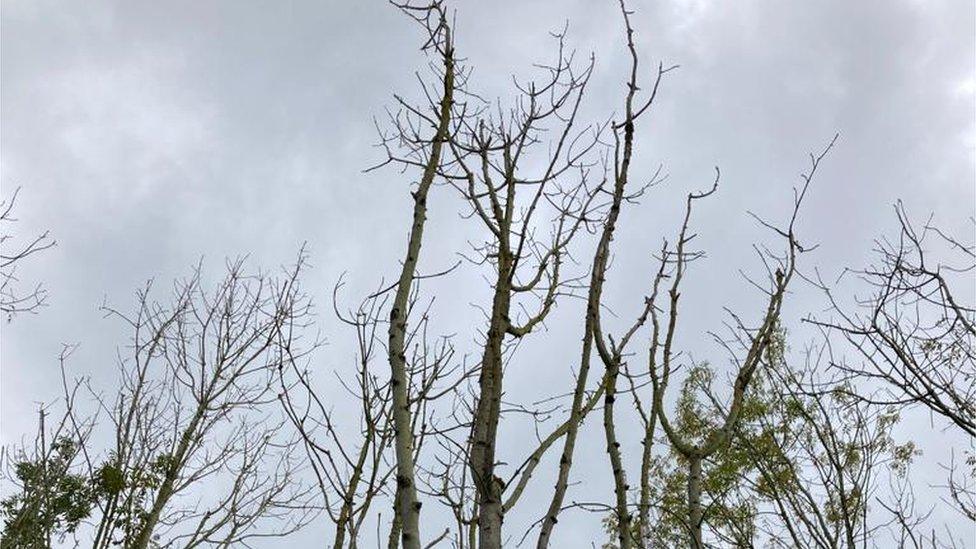
The disease causes trees to die at the top of the leaf canopy
Ten years after it was identified, the disease has spread to all parts of the country, but some trees are now beginning to show resistance to the fungus.
Mr Stanway said: "It is sad, ash has a cultural significance and has been used for hundreds of years.
"But the ash tree reproduces very well, and that genetic variation will allow it to flourish once more," he added.

Follow BBC West on Facebook, external, Twitter, external and Instagram, external. Send your story ideas to: bristol@bbc.co.uk , external
Related topics
- Published31 March 2022
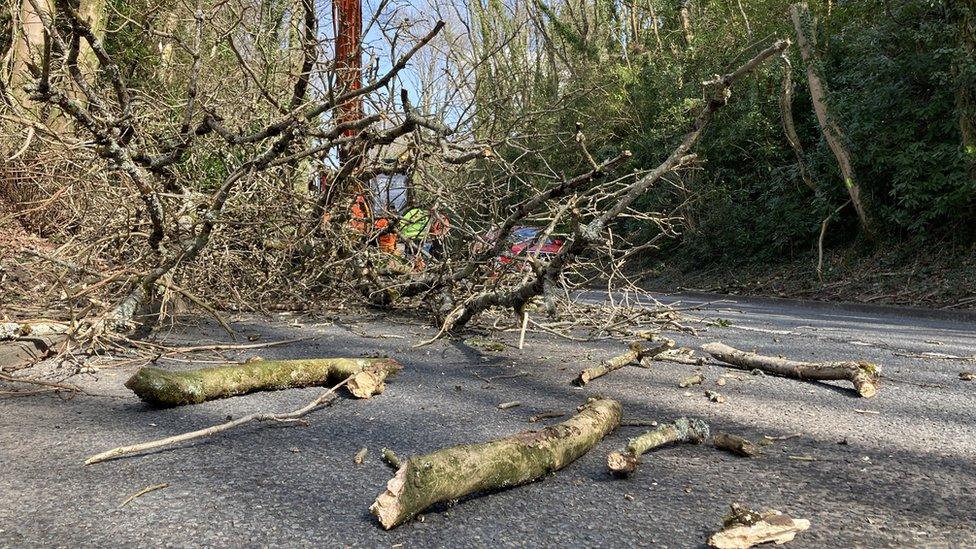
- Published20 July 2022
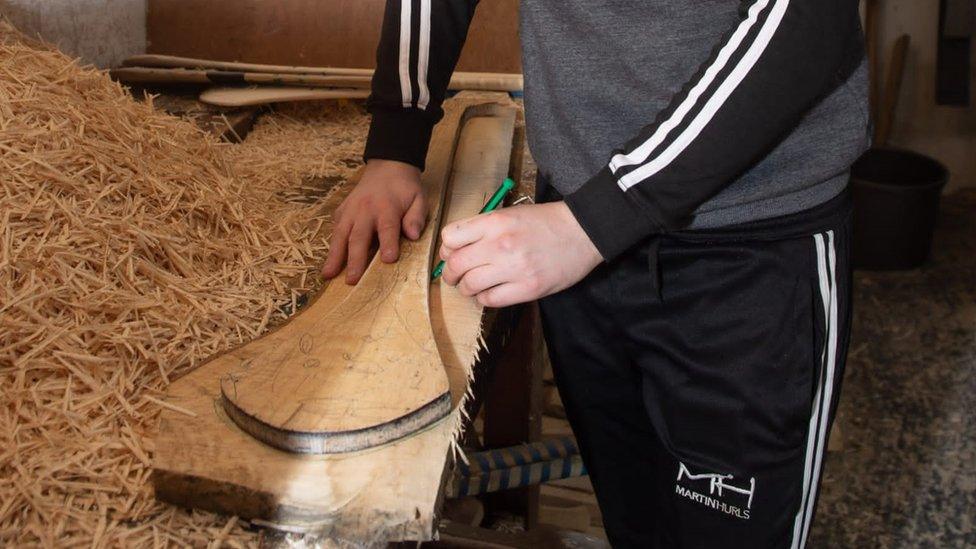
- Published16 June 2013
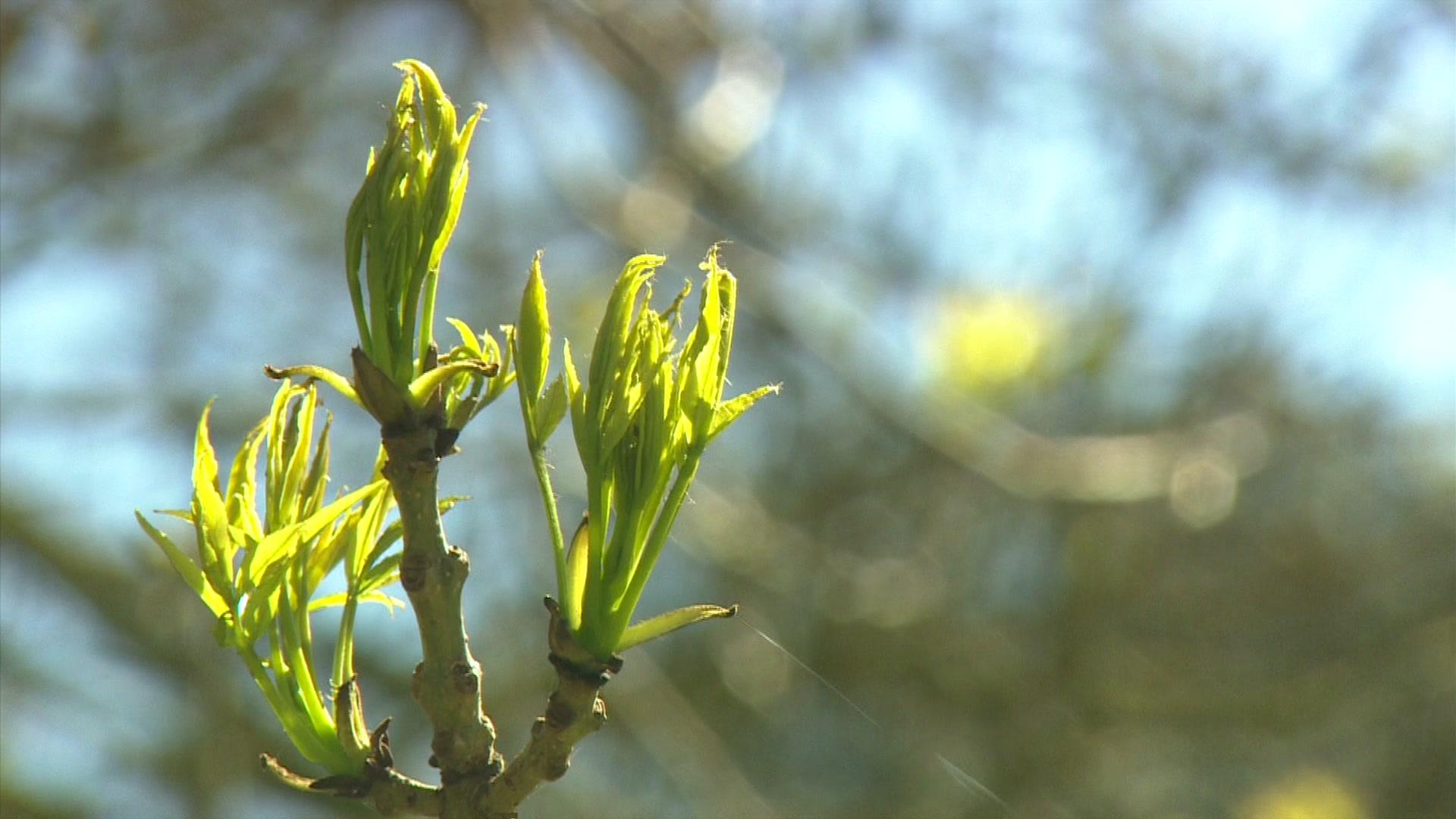
- Published5 December 2018
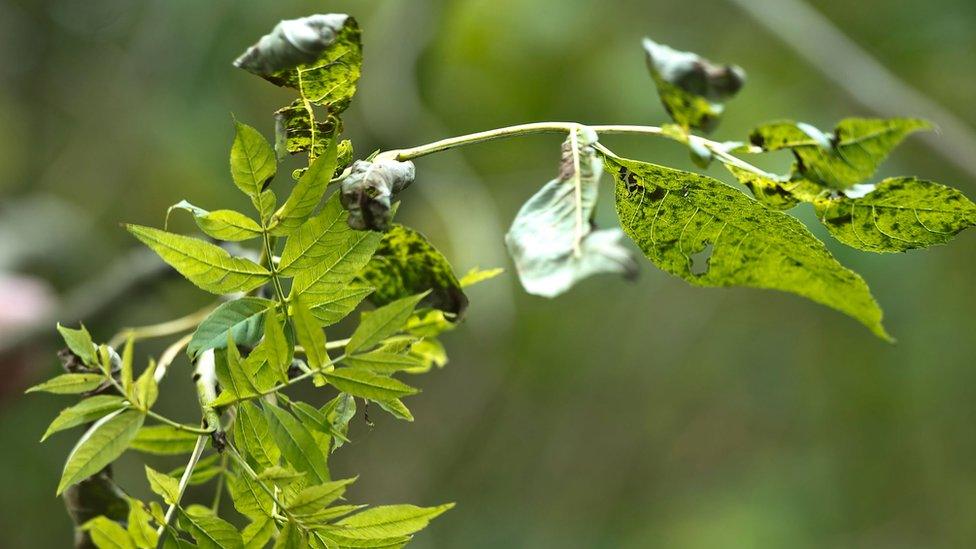
- Published3 November 2012

- Published7 November 2012
